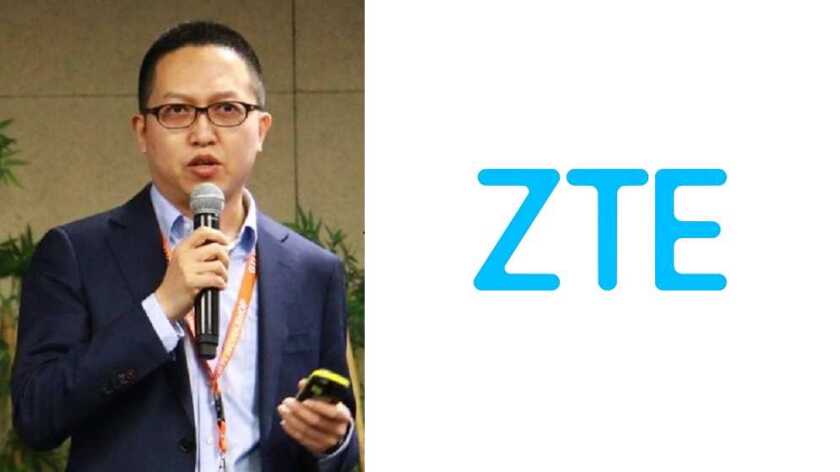With all the work being done to improve sustainability, has the telecoms industry already reached its carbon peak?
When the telecoms industry reaches carbon peak depends on its construction scale and energy efficiency. It also depends on the structure, especially the proportion of new energy being used. That’s why the telecoms industry in different regions has different carbon emission levels, due to factors such as network infrastructure construction, economic development level, and the energy mix.
Thanks to technological progress the energy efficiency of ICT infrastructure has greatly improved. But in the short term, the reliance on fossil fuels and poor network infrastructure still poses a huge challenge to the ICT industry in some regions.
With the acceleration of the global digital transformation, the demand for ICT infrastructure including connectivity and computing power increases. In order to achieve the ITU's goal of reducing emissions in the ICT industry by 45% by 2030 based on the SBTi, a concerted effort of the whole industry is required.
How can the telecoms industry as a whole become carbon neutral?
We believe that the telecoms industry needs to reduce its carbon output through the entire industry chain. This will also help the sector’s business partners and other parts of the society and economy to reduce emissions. The various participants in the industry chain need to coordinate and energise each other.
On the one hand, ZTE implements carbon management with our suppliers. On the other hand, we strive to improve product efficiency by building new green ICT infrastructure to reduce the carbon footprint of our operators. This can be achieved through continuous innovation in technologies, the introduction of new architectures, new equipment, new materials, and new algorithms.
The two major challenges for operators to reduce their energy consumption are the IDC and radio access networks. Green data centres, for instance, allow operators and the industry as a whole to reduce emissions. And Powerpilot, ZTE’s intelligent power-saving solution for radio networks, can realise smart power-saving based on traffic and services. Powerpilot has been deployed in many countries. In Xi’an, China, for instance, energy savings achieved with Powerpilot exceeds 20% in all scenarios.
What role does technology play in supporting a more carbon neutral future?
With the acceleration of the digital transformation and the continuous improvement of 5G, big data, cloud computing, and artificial intelligence, digital technologies are being used in various industries. Through efficient data connections, storage, computing, and application, we can improve the resource allocation and efficiency of production processes, and further reduce energy consumption and improve efficiency.
Although the infrastructure required for these digital technologies will increase carbon emissions in the short term, digital technologies will bring far more emission-reduction effects to the society as a whole. Studies show that digital technologies can help other industries reduce their carbon emissions more than 10 times the emissions of the ICT industry. Therefore, digital technologies will play an important role for a carbon neutral future.
How is ZTE approaching its carbon neutrality goals and what steps has it already implemented?
As an active practitioner of green development, ZTE and our partners are committed to implementing closed-loop carbon management throughout the product lifecycle. In addition, ZTE promotes measures in its daily work and production operations to reduce the consumption of and impact on natural resources.
Becoming carbon neutral is an important part of ZTE’s strategy, and we have established dedicated teams for achieving that.
ZTE has taken various measures to reduce the carbon emissions of enterprises, for example: pursuing green production, and reducing resources and energy consumption through a continuous transformation of production processes. The annual electricity savings achieved through intelligent digital optimisation and improvements to the production process exceed 30 million kWH.
In our business activities, we have implemented carbon footprint tracing management over the full lifecycle of products. At the same time, the use of intelligent air conditioners and intelligent lighting greatly reduce electricity consumption while ensuring a comfortable working environment for the staff. Our annual electricity generation using green photovoltaic batteries that we build ourselves exceeds 3 million kWH.
Our goal is to achieve carbon peak before 2030 and be carbon neutral before 2060.
What are the strategic priorities for the company as we head into 2022?
In 2022, ZTE will enter a new development period, and lowering carbon emissions will be an element of the core strategies for ZTE's future development.
ZTE acts in multiple roles when it comes to lowering carbon emissions. As an infrastructure provider for the ICT industry, ZTE is committed to providing a green ICT infrastructure for the entire industry. This requires ZTE to provide high-performance and low-energy-consumption products. Therefore, ZTE will continuously evolve core technologies such as chips, algorithms, and architectures to improve our products’ performance while lowering power consumption and reducing size. In terms of software, we will further reduce energy use during network operation through intelligent radio orchestration, intelligent energy saving, etc.
On the other hand, we actively work with operators and partners to implement green empowerment practices in vertical industries. For example, we have worked with operators and partners to jointly build the largest aluminium electrolytic company in southwest China: Yunnan Shenhuo Aluminium. The real-time monitoring of the production process has been be optimized through the use of AI and 5G, which improves the aluminia concentration. This saves 90 million kWH of power consumption each year under the condition of full capacity.
In the electricity industry, ZTE, China Mobile, and China Southern Power Grid established the largest demonstration area for a 5G intelligent power grid in Nansha, Guangzhou. Through 5G-based differential protection, the system implements precise load control, reducing the impact of new energy sources on the power grid. By 2030, Southern Power Grid will have quadrupled the capacity of the new energy.
At the same time, we will continue to promote our low-carbon operations to achieve the company's goal of becoming carbon neutral.









